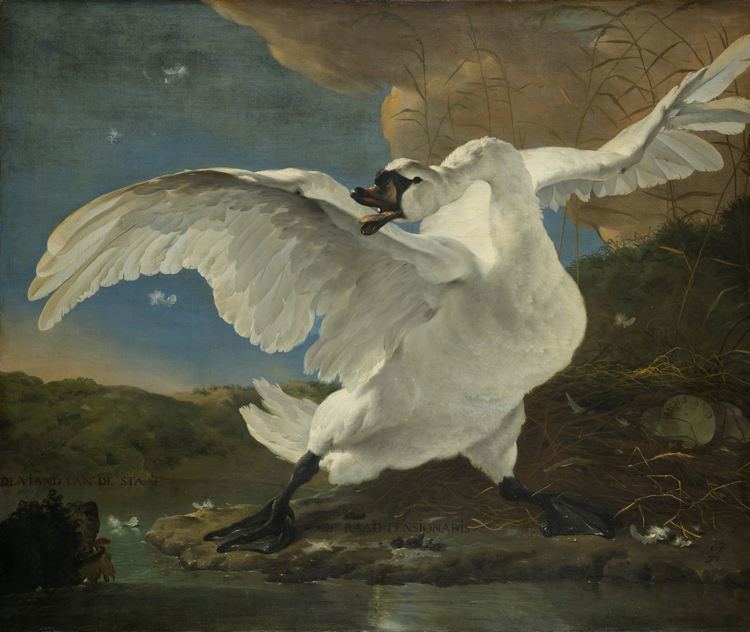Year c. 1650 | Dimensions 1.44 m x 1.71 m Created 1650 Media Oil paint | |
 | ||
Similar Artwork at Rijksmuseum, Dutch Golden Age artwork, Oil paintings | ||
The threatened swan top 5 facts
The Threatened Swan (Dutch: De bedreigde zwaan) is an oil painting of a swan made around 1650 by Dutch Golden Age painter Jan Asselijn. The work is in the collection of the Rijksmuseum in Amsterdam in the Netherlands.
The oil painting on canvas is 144 centimetres (57 in) high and 171 centimetres (67 in) wide. The painting's subject is a life-size swan (Cygnus olor) defending its nest against a dog. At the bottom right, the painting is signed with the monogram "A".
By 1800 when it was purchased, the painting was interpreted as a political allegory of grand pensionary (the highest official in the Dutch Republic) Johan de Witt protecting the country from its enemies. Three inscriptions had been added: the words "de raad-pensionaris" (the grand pensionary) between the swan's legs, the words "de viand van de staat" (the enemy of the state) above the head of the dog on the left, and the name "Holland" on the egg on the right.
In the 1790s this painting was in the collection of Jan Gildemeester and was included in the 1800 catalog of paintings (ordered alphabetically by artist) produced for his estate sale, though it was not included in Adriaan de Lelie's 1794 painting of the collection known as The Art Gallery of Jan Gildemeester Jansz. The catalog states that it is an "allegory of Raadpensionaris de Witt". The painting was purchased by the art dealer Cornelis Sebille Roos for 100 guilders for the Nationale Konst-Gallery in The Hague, on behalf of the director Alexander Gogel. It is documented as the first purchase by that institution.
It has been speculated that the white text that was painted onto the painting was done during the Witten-Oorlog. The painting was purchased for the Nationale Konst-Gallery in The Hague in 1800 based on its allegorical reference, but only later did visitors point out that the painter had died long before the murder of the De Witt brothers took place.
